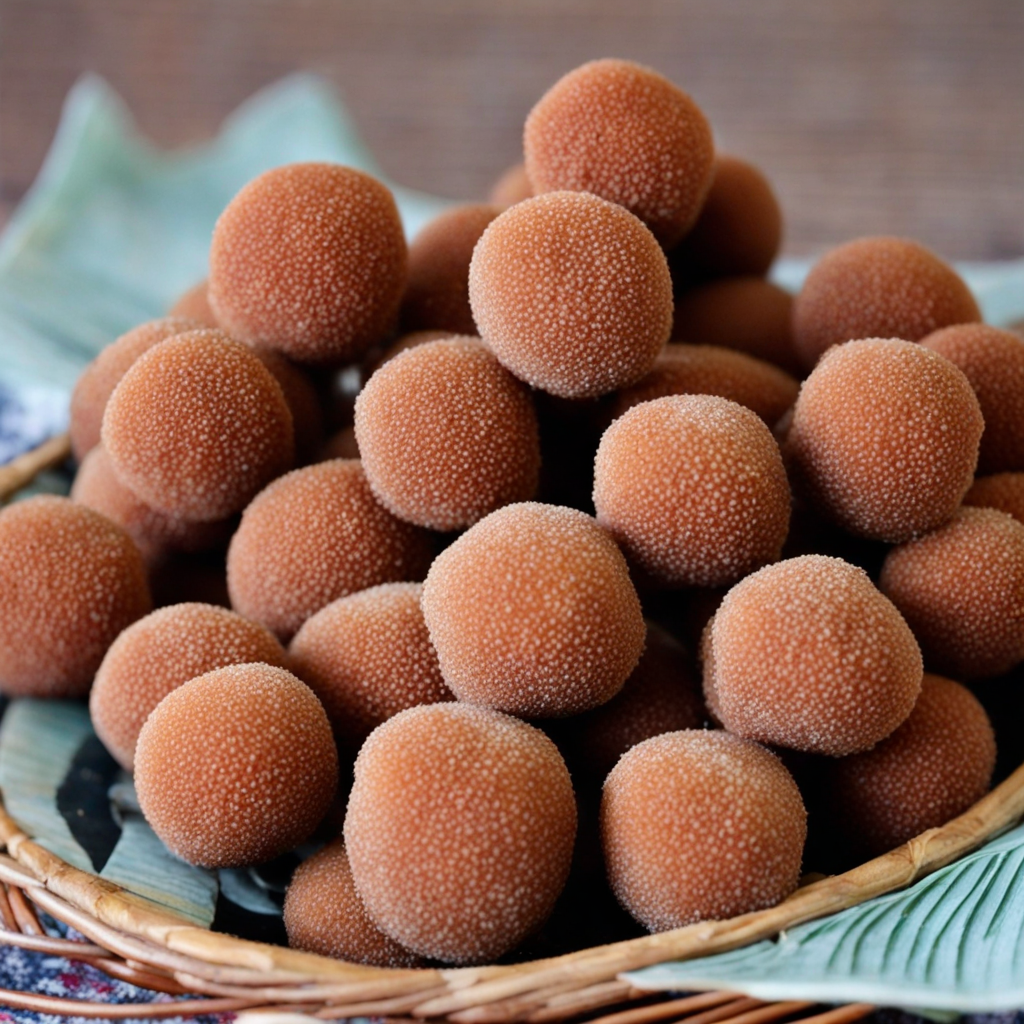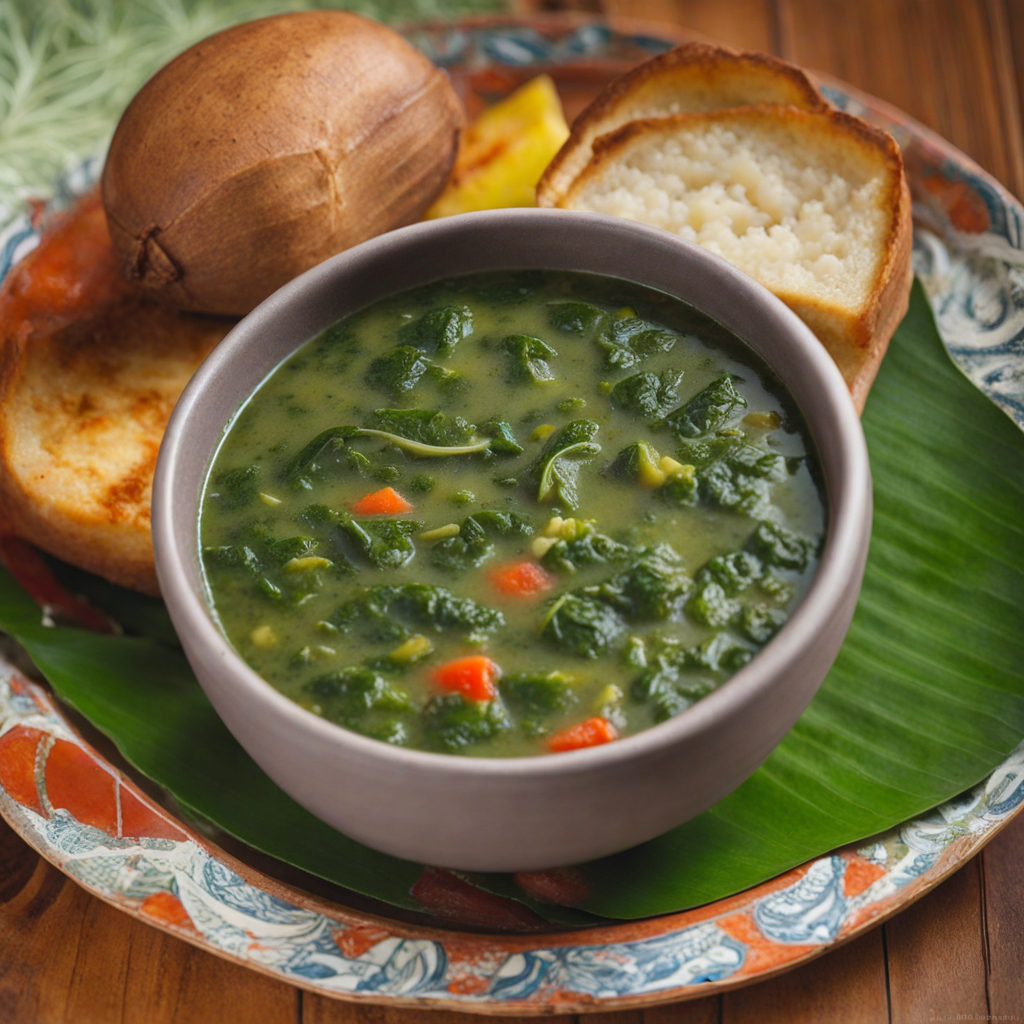Tamarind Balls
Tamarind Balls are a delightful treat hailing from the beautiful island of Dominica, where the tropical climate gives rise to an abundance of vibrant flavors. These small, round confections are made primarily from the tangy pulp of tamarind, a fruit known for its unique balance of sweetness and acidity. The tamarind pulp is combined with sugar, spices, and sometimes nuts to create a chewy, flavorful ball that bursts with a taste reminiscent of both sweet and sour. The vibrant brown color of the tamarind balls reflects the rich, natural ingredients that go into this beloved snack.
How It Became This Dish
The Sweet and Tangy Journey of Tamarind Balls in Dominica #### Origins and Historical Context Tamarind Balls, a beloved treat in Dominica, are a testament to the island's rich cultural tapestry and its agricultural bounty. Native to tropical Africa, the tamarind tree (*Tamarindus indica*) was brought to the Caribbean by the Portuguese and later cultivated by the Spanish and British colonizers. Over centuries, tamarind became deeply integrated into the local diets of Caribbean nations, including Dominica, where it thrived in the island's fertile soil and warm climate. The tamarind fruit is a pod-like structure containing a tangy pulp, encased in a hard shell. Traditionally, the fruit was used for medicinal purposes, as well as a flavoring agent in various dishes. Its sweet-sour taste made it an attractive ingredient for culinary experimentation, leading to the creation of tamarind-based confections. Tamarind Balls emerged as a way to preserve and enjoy the fruit, especially in a culture that values resourcefulness and the use of local ingredients. #### Cultural Significance In Dominica, food is a reflection of the island's history, heritage, and communal ties. Tamarind Balls are not merely a confection; they embody the spirit of Dominica's agricultural traditions and the interconnectedness of its people. The preparation and sharing of Tamarind Balls are often communal activities, bringing families and friends together. These treats are commonly made during special occasions, festivals, and holidays, serving as a symbol of hospitality and generosity. The process of making Tamarind Balls often involves gathering the ripe tamarind pods, which is typically a communal task. Once the pods are harvested, they are peeled, and the pulp is extracted. This pulp is then mixed with sugar and sometimes spices like nutmeg or cinnamon, rolled into small balls, and coated with granulated sugar or grated coconut. The tactile nature of this process, along with the vibrant flavors, fosters a sense of connection among those who participate, reflecting the island's communal spirit. Moreover, Tamarind Balls hold a nostalgic value for many Dominicans, evoking memories of childhood and simpler times. They are often associated with local fairs and markets, where vendors sell these delightful treats alongside other traditional snacks. The taste of Tamarind Balls is intrinsically linked to the memories of growing up in Dominica, making them a cherished part of the island's culinary heritage. #### Evolution Over Time As Dominica's society has evolved, so too has the preparation and consumption of Tamarind Balls. In the past, these treats were primarily made at home, passed down through generations of families. Today, while many still adhere to traditional recipes, Tamarind Balls have also found their way into commercial production. Small-scale entrepreneurs and local businesses have begun to package and sell Tamarind Balls, introducing them to a wider audience both within the Caribbean and internationally. The adaptation of Tamarind Balls to modern tastes has also seen the introduction of variations. While the traditional recipe remains popular, some innovative cooks have experimented with different flavors and fillings, incorporating ingredients such as ginger, local rum, or even chocolate. These creative versions not only appeal to younger generations but also allow for a fusion of culinary traditions that reflect the global influences permeating Caribbean cuisine. Additionally, the rise of the wellness movement has sparked interest in natural and organic foods, leading to a renewed appreciation for traditional snacks like Tamarind Balls. The natural tanginess of the tamarind fruit, combined with its health benefits—rich in vitamins, antioxidants, and dietary fiber—has made it a sought-after ingredient for health-conscious consumers. This shift has encouraged local farmers to cultivate tamarind trees more extensively, ensuring a sustainable supply of this versatile fruit. With the increasing popularity of Caribbean cuisine worldwide, Tamarind Balls have also begun to gain recognition beyond the shores of Dominica. They are featured in Caribbean food festivals, culinary events, and even international food fairs, showcasing the island's culinary heritage and the unique flavors of its local ingredients. This global exposure has not only elevated the status of Tamarind Balls but has also sparked a renewed interest in Dominican culture and its traditional practices. #### Conclusion Tamarind Balls are more than just a sweet treat; they represent a rich historical narrative that spans continents and cultures. From their origins in Africa to their adoption and adaptation in the Caribbean, these delightful confections encapsulate the essence of Dominica's agricultural heritage and communal spirit. As they have evolved over time, Tamarind Balls have maintained their cultural significance while adapting to modern tastes and trends. As Dominica continues to embrace its culinary identity, Tamarind Balls stand as a symbol of resilience and innovation. They remind us of the importance of preserving traditional practices while welcoming new influences, reflecting the dynamic nature of Caribbean cuisine. Whether enjoyed at a local market, during a family gathering, or as a gourmet treat in a restaurant, Tamarind Balls remain an integral part of Dominica's culinary landscape, cherished by both locals and visitors alike. In a world increasingly driven by globalization, the story of Tamarind Balls serves as a reminder of the beauty and complexity of food history, highlighting the enduring connections between people, place, and palate. The future of Tamarind Balls looks bright, as they continue to delight sweet-toothed enthusiasts and serve as a delicious link to Dominica's vibrant past.
You may like
Discover local flavors from Dominica







